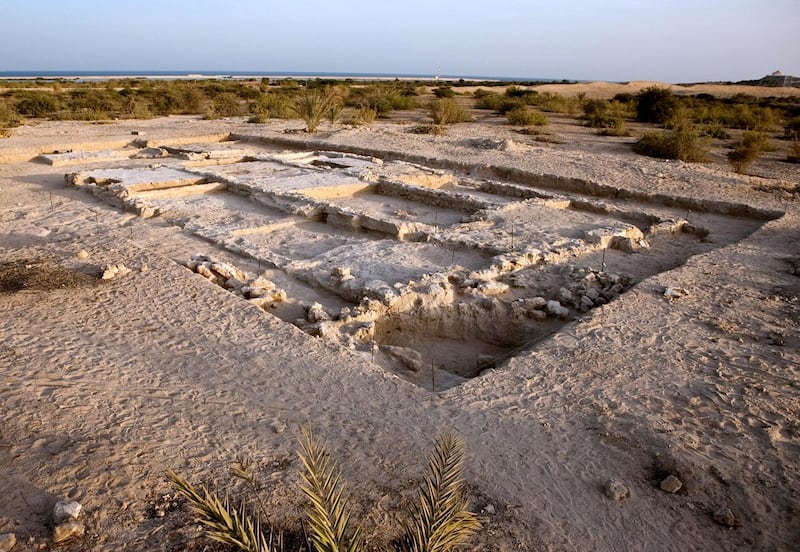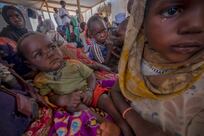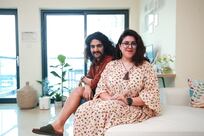Two years ago, I was fortunate enough to visit the Vatican as a member of a delegation led by Sheikha Lubna Al Qasimi, the first Minister of State for Tolerance in the UAE. Back in April 2017, there was a clear demonstration of the desire from both sides for a deepening and strengthening of a rapidly-developing relationship.
I cherish my memories of that trip and the warmth with which we were received. And now, with just a few days to go before next week's visit by Pope Francis, at the invitation of Sheikh Mohamed bin Zayed, Crown Prince of Abu Dhabi and Deputy Supreme Commander of the Armed Forces, a palpable excitement is building, not just among the country's Catholic population but in the wider community. Taking place early in our Year of Tolerance, the visit is tangible evidence of the way in which the UAE has established itself in accordance with the desire of its Founding Father, the late Sheikh Zayed, as a land where inhabitants of different faiths are welcomed and respected.
The visit will be the first of its kind to the Arabian peninsula by the head of the Catholic Church. It is of huge international significance, not just to Catholics in the UAE but for the whole region. The mass due to be celebrated on February 5 at Zayed Sports City will be attended by 135,000 people, the largest-ever gathering of Christians in Arabia.
In the Emirates today, most Catholics and Christians come from elsewhere. They are people who have made their homes here and who contribute in numerous ways to the building of the modern UAE. They and their beliefs have been, and continue to be, welcomed. However, it is important to remember that Christianity is not new to the country. Its presence here, albeit intermittent, can be traced back more than 1,400 years, as shown by the 1993 discovery of a Christian monastery on the island of Sir Bani Yas in the west of the country.
The pre-Islamic monastery, whose ruins were dug up by the Abu Dhabi Islands Archaeological Survey (ADIAS), where I was then working as executive director, appears to have been established in around 600AD by monks from a Christian denomination known as the Church of the East. With its heartland in modern-day Iraq, that church once had adherents not just in Arabia but throughout Central Asia, as far as China. The community on Sir Bani Yas survived for more than a century more, until at least the early 8th century, well into the early years of the Islamic period, which began in 622AD, providing evidence of an early religious tolerance in society in the Gulf.
Textual evidence of these early shoots of Christianity in the Gulf and finds from the site on Sir Bani Yas show that the monastery's inhabitants were not living in seclusion on the remote island. Instead, they were intimately engaged with the world around them. They participated in the pearling trade and had maritime links, not just with the rest of the region but with India and beyond. Discoveries of finely made plaster reliefs, one of which is now on display in Louvre Abu Dhabi, and of imported pottery and high-quality glass indicate that they were part of a sophisticated and cultured world.
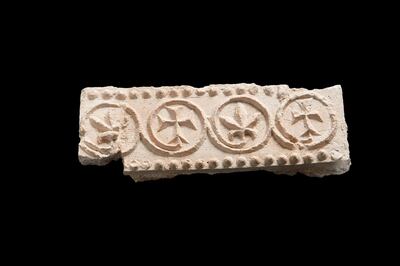
The discovery of the monastery was welcomed by Sheikh Zayed. He saw it not only as an essential part of the country's history and heritage but as evidence of a long-standing tradition of tolerance within local society. ADIAS benefited hugely from his support and encouragement.
The original Church of the East survives today, although much diminished from its former status as one of the world’s leading Christian denominations. It has split into several separate groups, one of which, the Chaldean Catholic Church formed in 1552, is in full communion with the Catholic Church in Rome, providing a direct link to next week’s Papal visit.
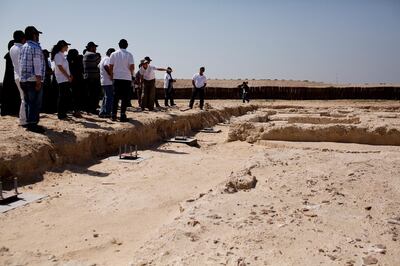
The historic relationship between Christianity and the Emirates, however, is not confined to the monastery, important though that is. The Christian communities of Kerala in southern India, many of whom now live in the UAE, trace their origins back to the missionary Saint Thomas, who travelled to India in the 1st century AD, perhaps calling at Gulf ports en route.
During the era of the Portuguese in the Gulf in the 16th and early 17th centuries, Christian priests and nuns on the island of Hormuz near the mouth of the Gulf would have known of, and engaged with, the UAE’s predominant port city of the time, Julfar, which we know as Ras Al Khaimah today.
There are extensive collections of archival documents relating to this past, some of which we were shown during our visit to the Vatican, which has records of its interactions with the region. In the future perhaps research on those archives will shed valuable new light on the UAE’s past.
Next week’s visit by the Pope will not just be a chance to connect with Catholics in the region; it will also promote greater dialogue and better understanding between the two great faiths of Christianity and Islam. At a turbulent period in the region, that is one of the greatest challenges of our time.
At the same time, however, I hope it will provide an opportunity to recognise and enhance understanding of the part Christianity has played in our collective history.
Peter Hellyer is a consultant specialising in the UAE’s history and culture
